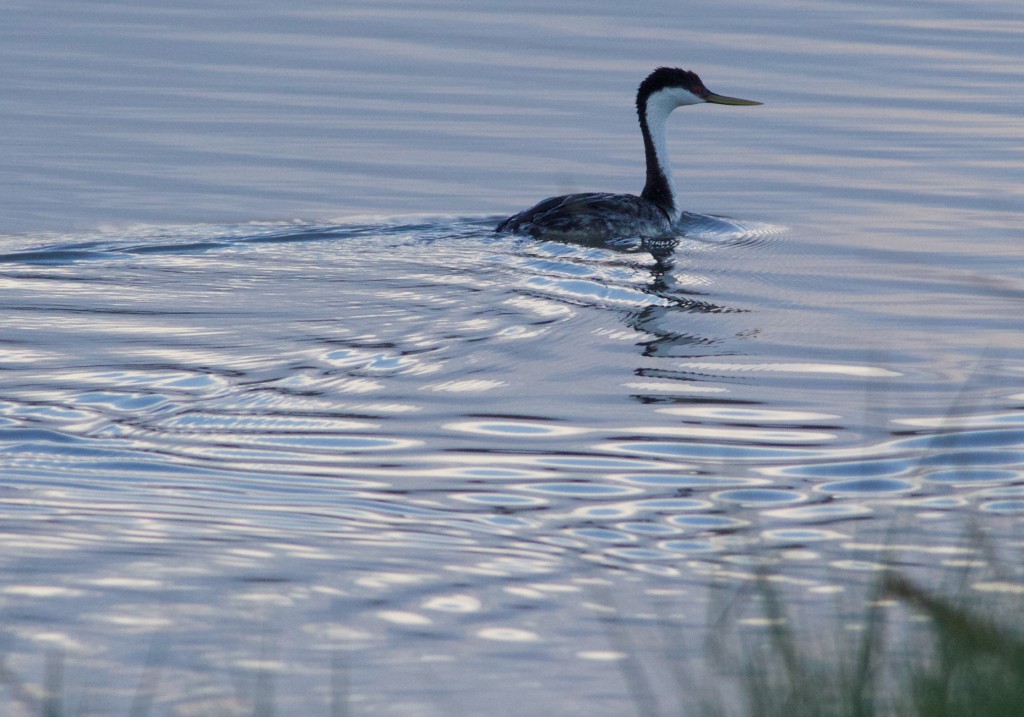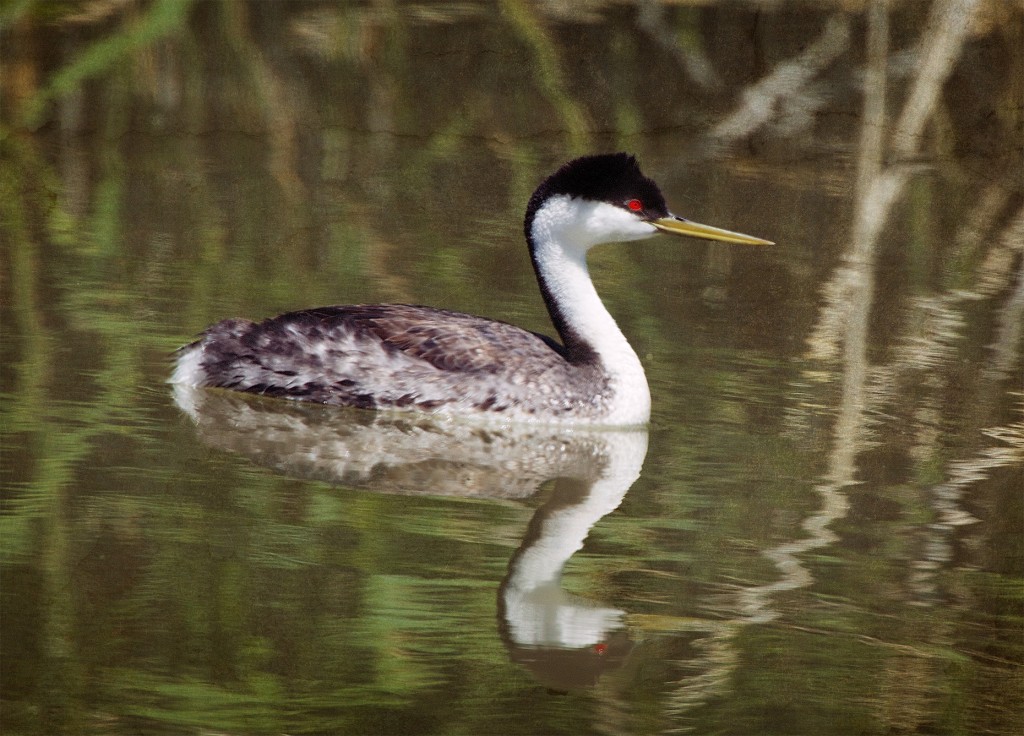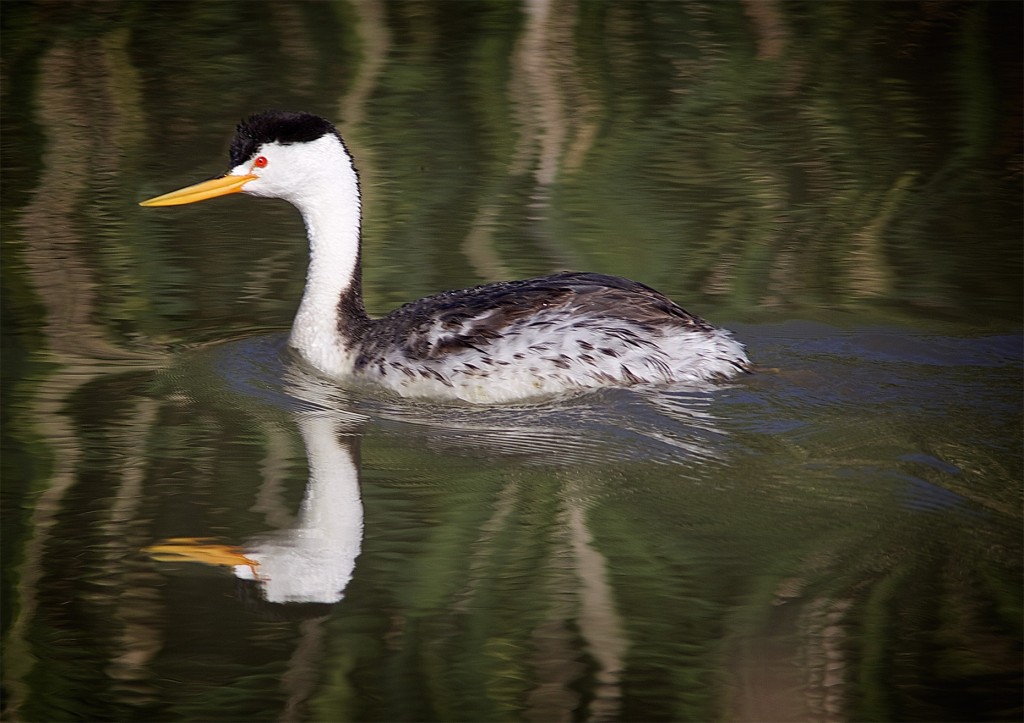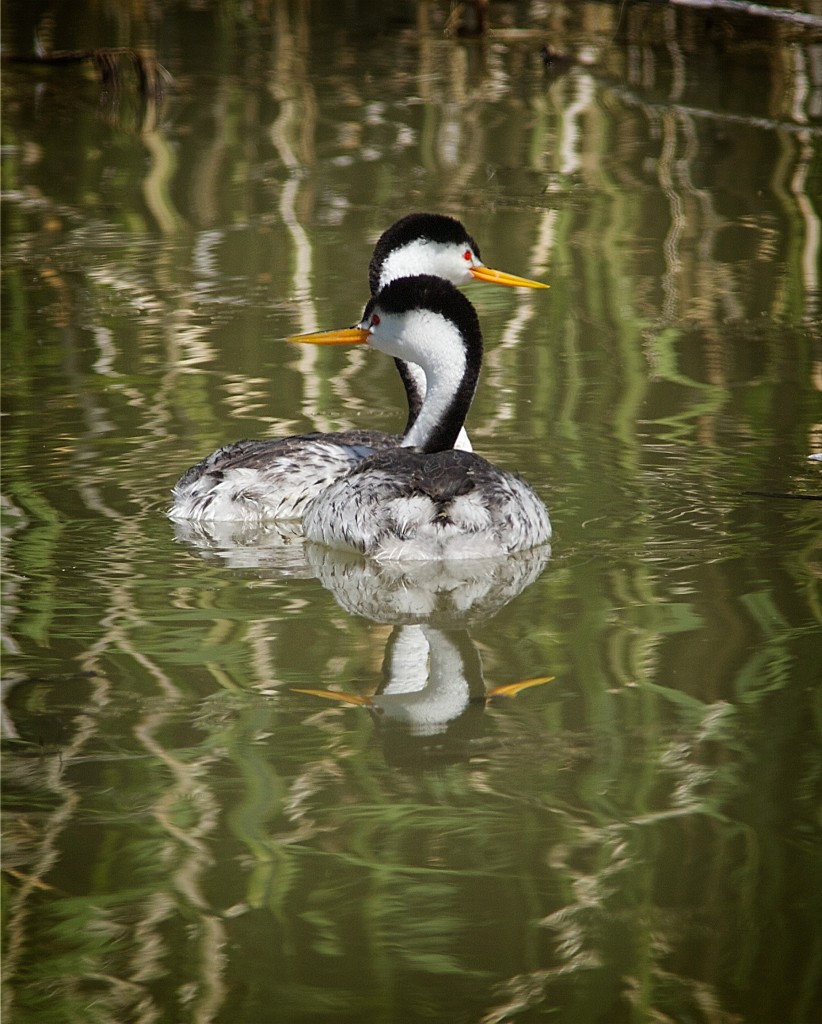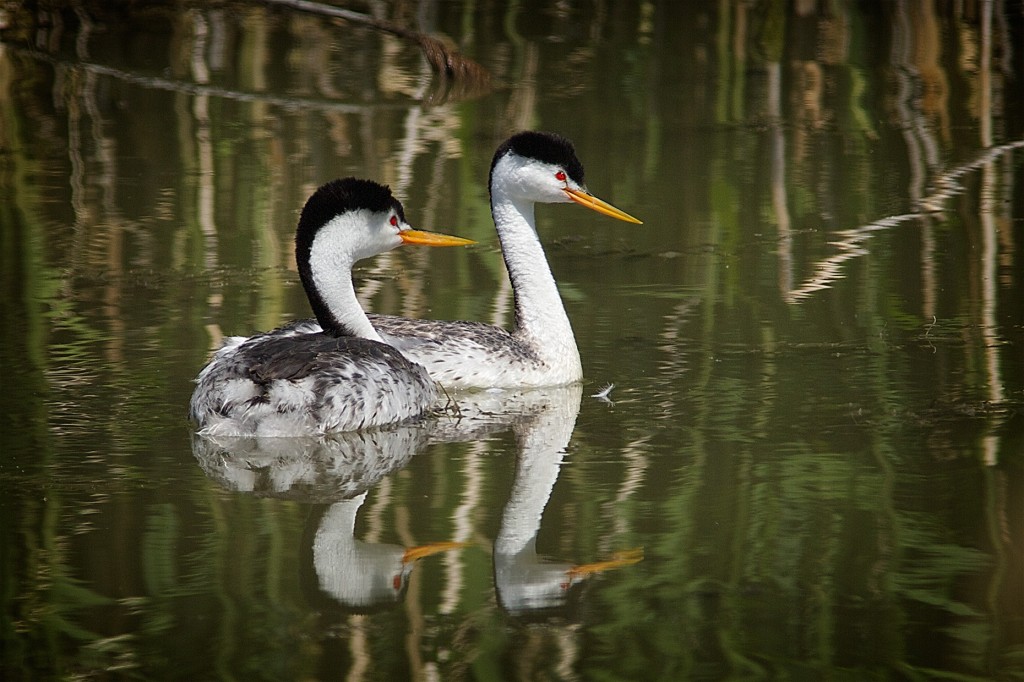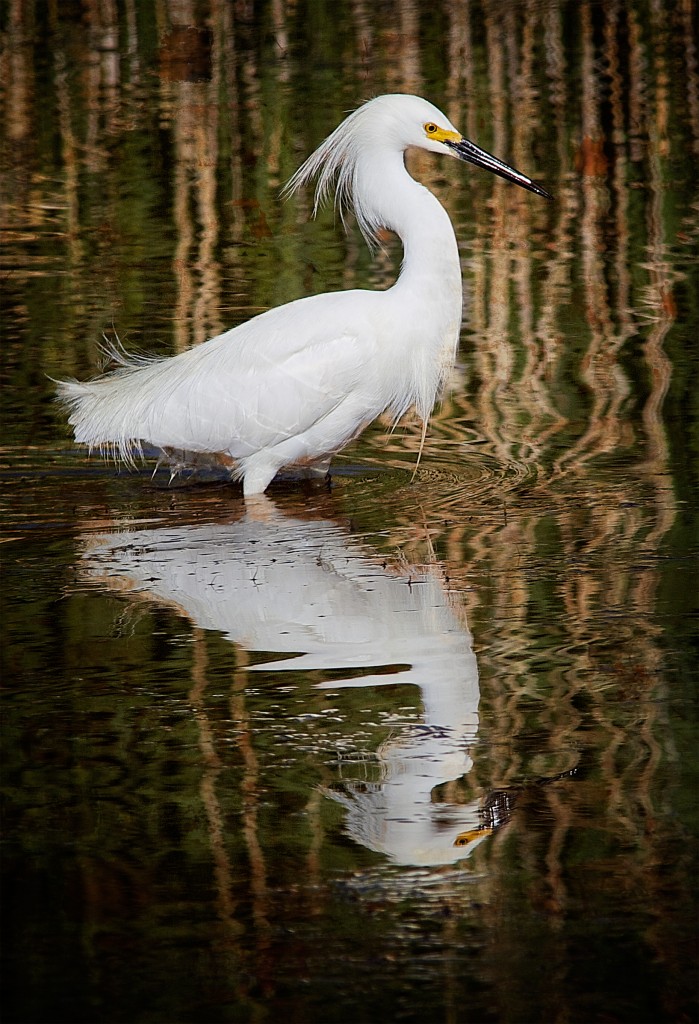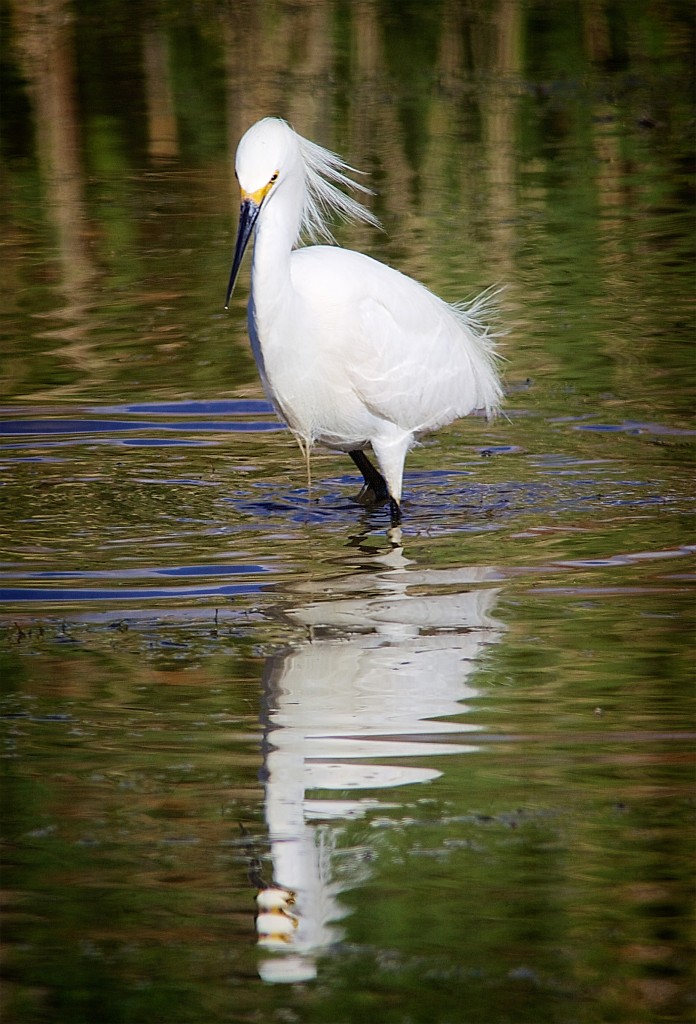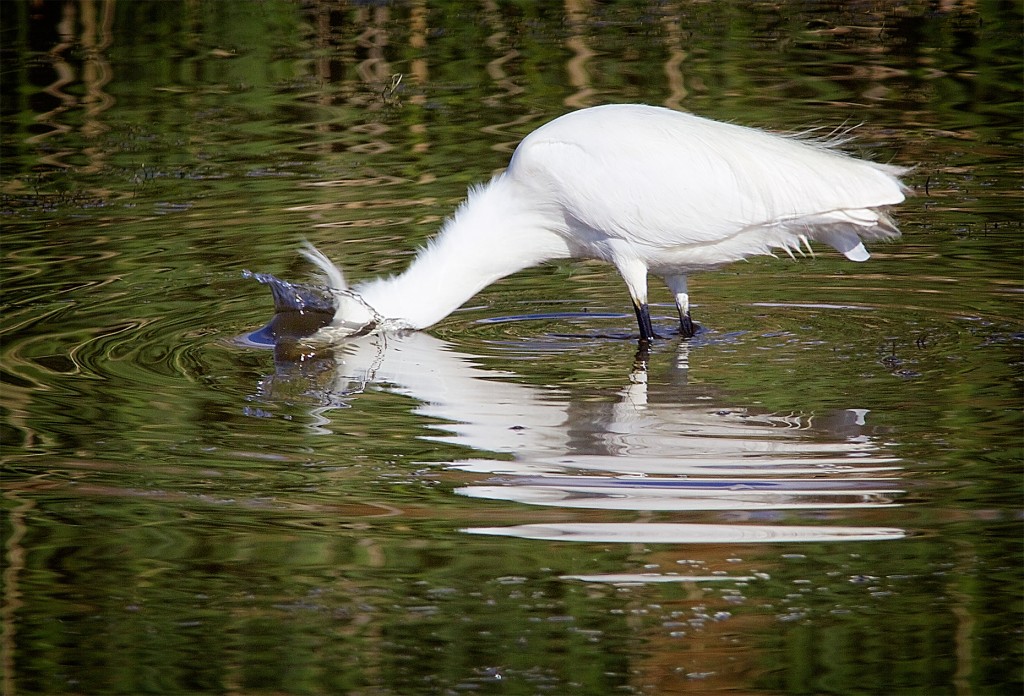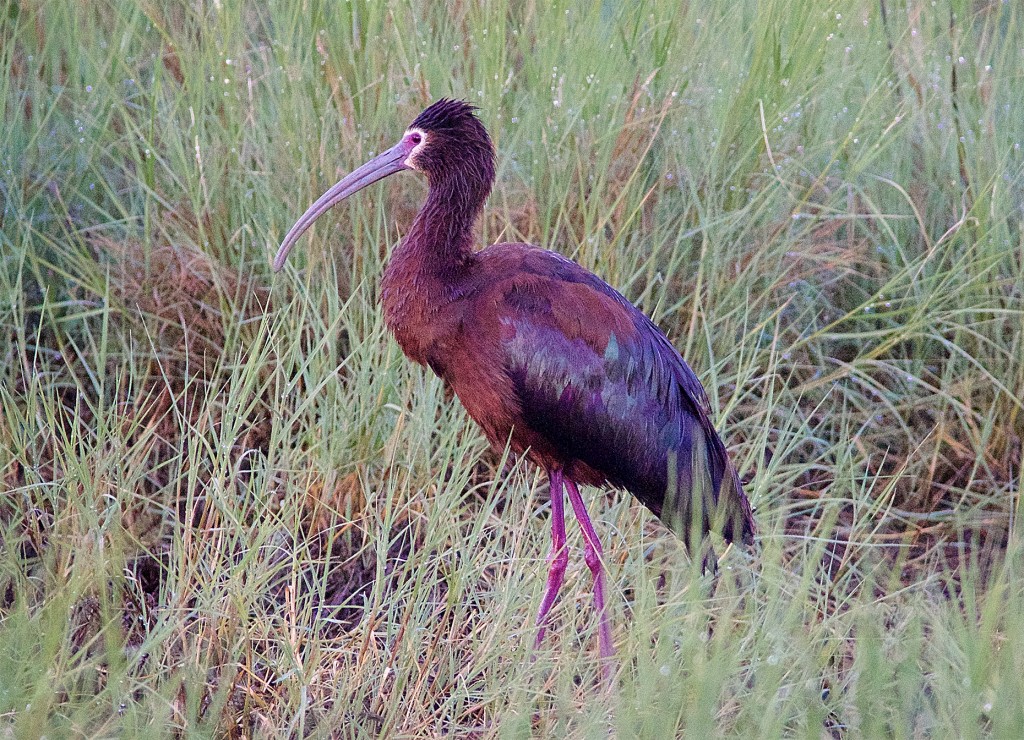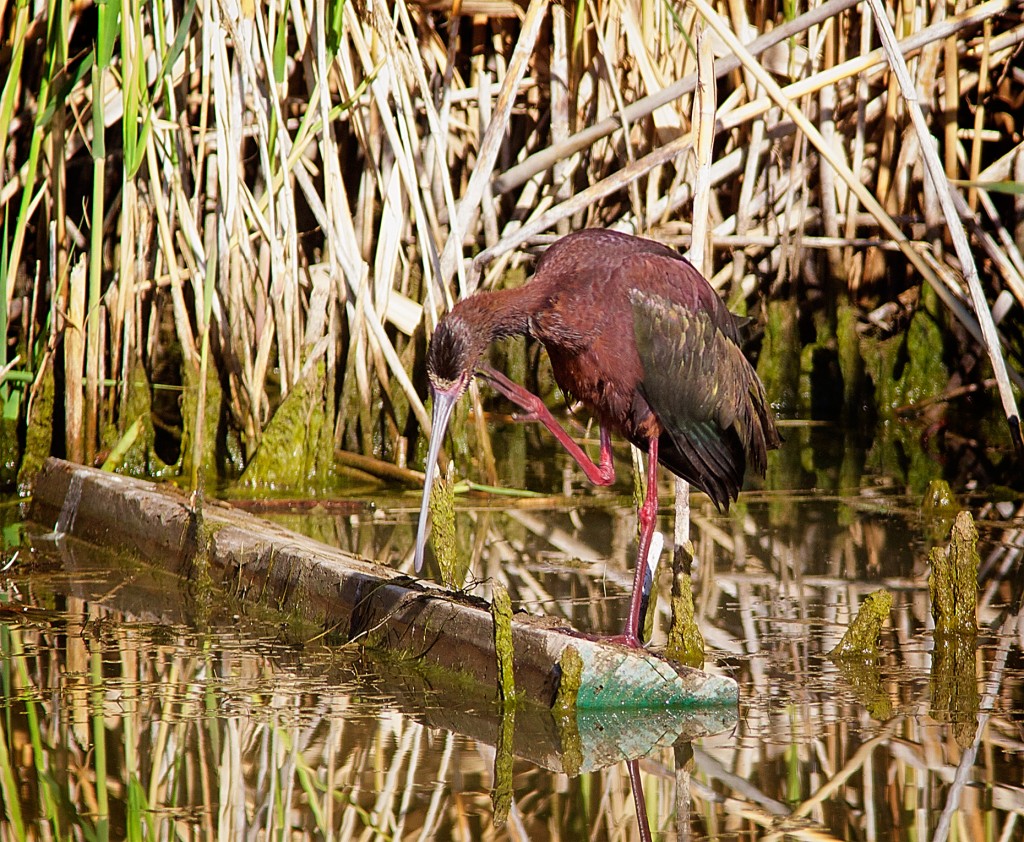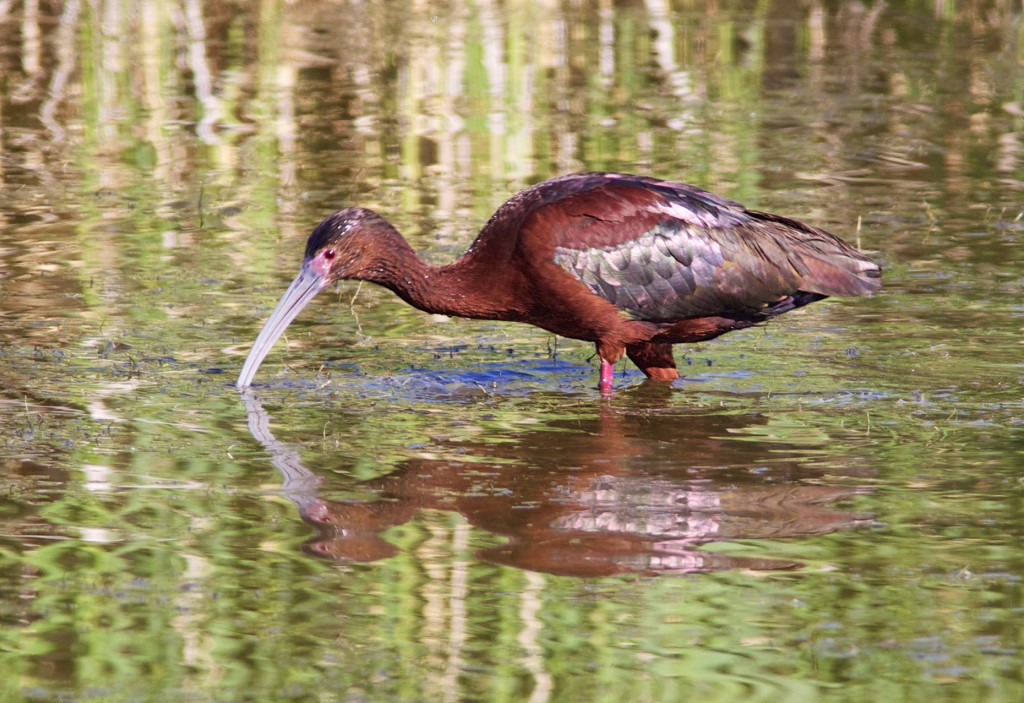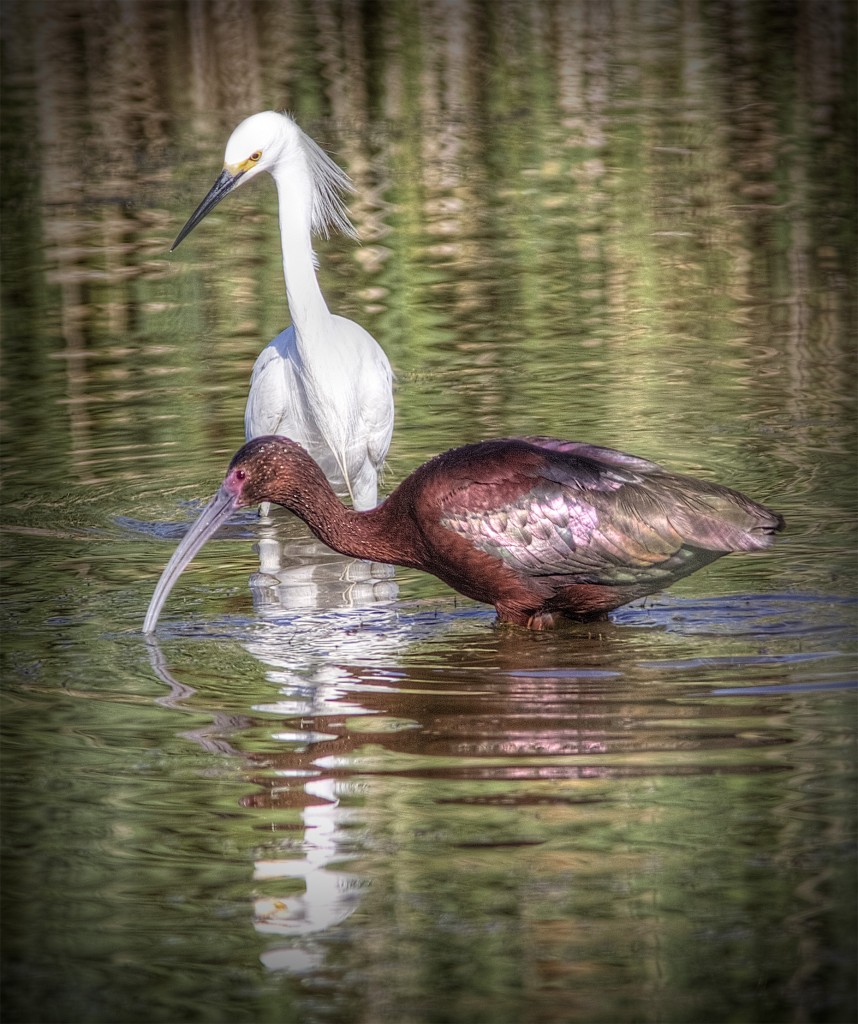I was disappointed that I didn’t see many Western or Clark’s Grebes at Malheur when I was there, but I shouldn’t have worried because it was one of the first birds I saw at Bear River, almost before the sun rose.
I’m so used to seeing Western Grebe in the Puget Sound region, like this one
that it took me awhile to realize that most of the grebes I were seeing were actually Clark’s Grebes, which look like this one.
To the untrained eye, they look the same, but the black topknot descends lower on the Western Grebe, and its bill is a subtle greenish-yellow, not bright orange. Of course, Stokes points out that the two varieties also interbreed, so it’s not always that easy to distinguish one from the other.
Luckily, both varieties are equally beautiful. I had hoped that I would either see pairs performing mating dances or see mothers carrying the chicks on their back, but apparently I was too late for the former and too early for the latter.
So I had to settle for shots like this of romantic pairs that obviously wanted to be close to each other,
while I was there,
but didn’t seem too interested in dancing up a storm for me. Damn.
The biggest disadvantage to visiting far away places is that you have only one chance to see birds, and it’s very hard to figure out when they will be mating or having babies. I worried that I would be too late to get shots of young Avocets, but it turned out they were just beginning to nest, much less have chicks. That wouldn’t be problem near home; I would be able to predict when I needed to get back by what I saw on my visit. I’m probably not going to get back to Big Bear until Fall, if then. By then most of the birds will have already left. I won’t really have much chance of seeing most of them before next summer, a long ways off.

